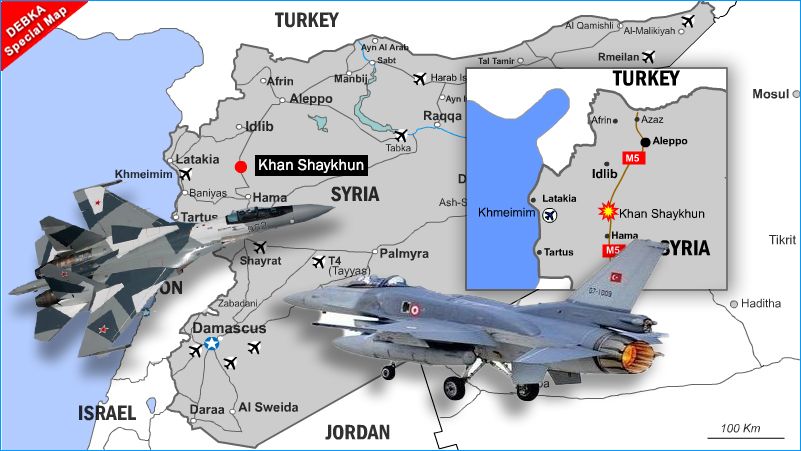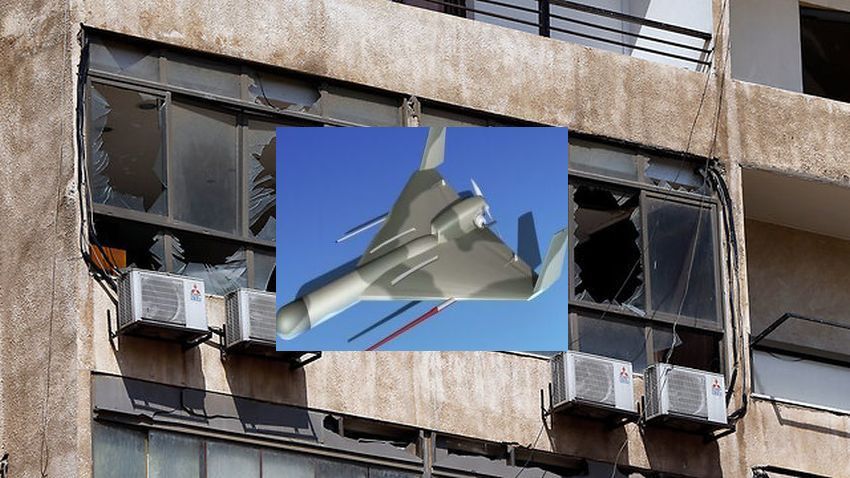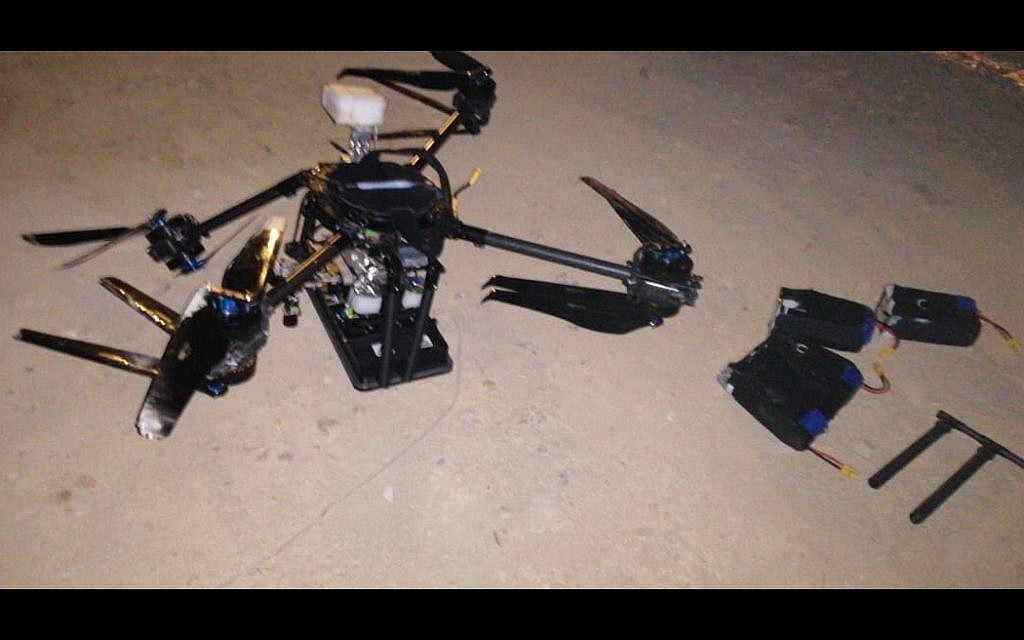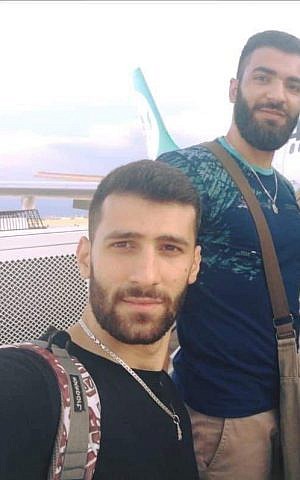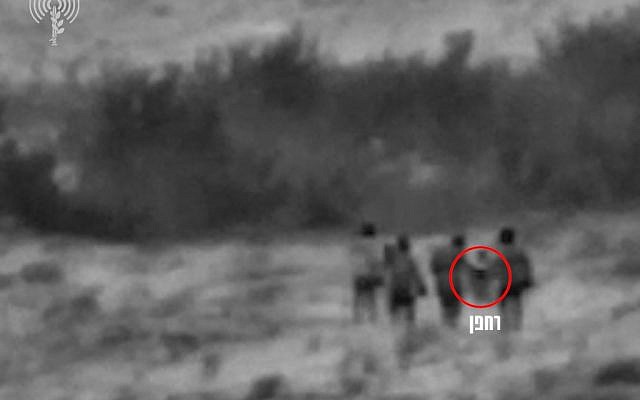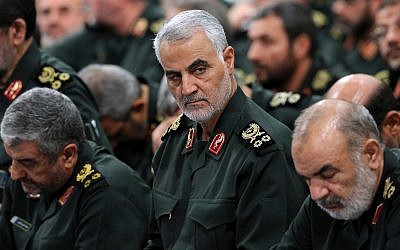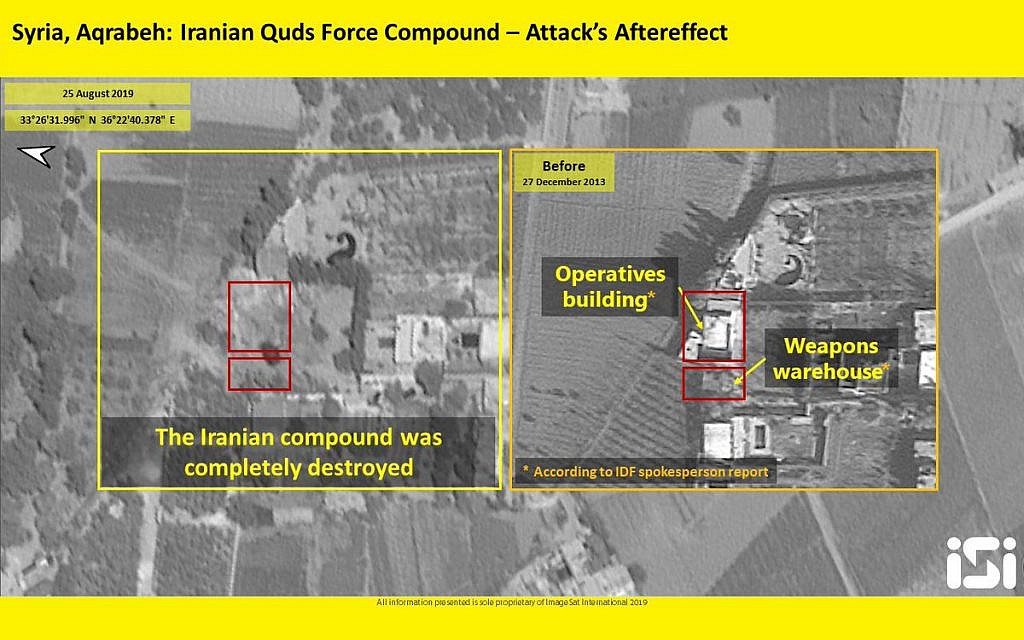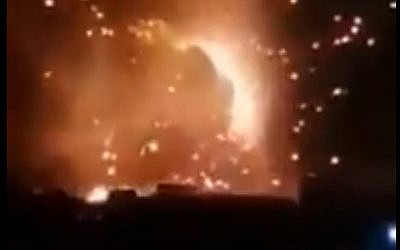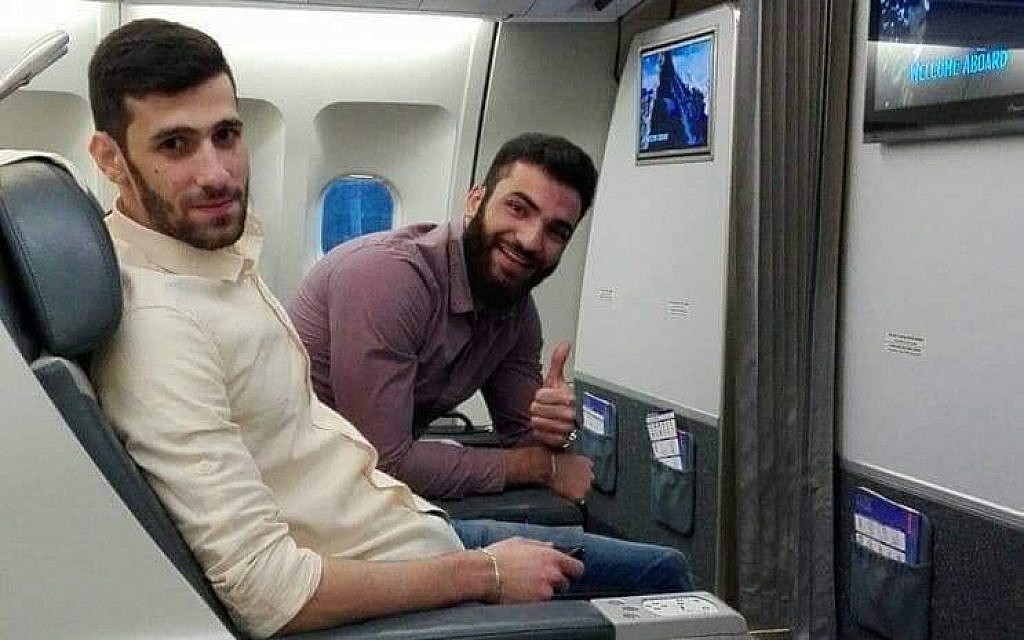IDF says 2 Hezbollah fighters killed in Syria strike trained in Iran for attack
Hassan Yousef Zabeeb and Yasser Ahmad Daher traveled to Islamic Republic multiple times and worked under IRGC Quds Force, military says
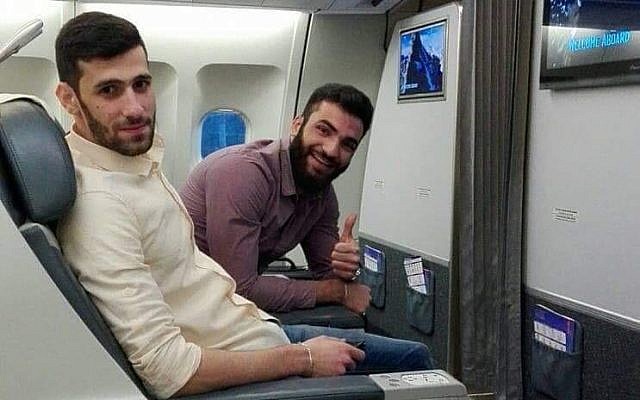
Hassan Yousef Zabeeb, left, and Yasser Ahmad Daher, two Hezbollah members killed in an Israeli airstrike in Syria to thwart a plot to launch armed drones into Israel, seen flying to Iran from Lebanon in an undated photograph. (Israel Defense Forces)
The Israel Defense Forces on Monday identified two of the people killed in its airstrikes in Syria on Saturday as Lebanese nationals trained to operate attack drones by the Iranian military.
Late Saturday night, the IDF conducted a series of airstrikes in Syria against a group led by Iran’s Islamic Revolutionary Guard Corps, which had been planning to fly kamikaze-style drones carrying explosives into targets in northern Israel.
According to the Syrian Observatory for Human Rights monitor, at least five people were killed in the strike, including two Hezbollah members and an IRGC operative. Two others who were not immediately identified.
The Israeli army identified two of those killed as Lebanese nationals Hassan Yousef Zabeeb, 23, from the town of Nabatieh, and Yasser Ahmad Daher, 22, of Blida.
Hassan Yousef Zabeeb, left, and Yasser Ahmad Daher, two Hezbollah members killed in an Israeli airstrike in Syria in response to a plot to launch armed drones into Israel, fly to Iran from Lebanon in an undated photograph. (Israel Defense Forces)
On Sunday night, head of the Hezbollah terror group Hassan Nasrallah said the two men were members of his organization.
“The place that was bombarded only had Lebanese youth from Hezbollah. In that place, two martyrs fell,” Nasrallah said in a speech, identifying them by name.
According to the IDF, Zabeeb and Daher were working on behalf of the Quds Force, under the command of IRGC leader Qassem Soleimani, who led the drone plot.
“The men who were killed spent time in Iran on a number of occasions in recent years. As part of their time in Iran, they went through specific training programs in the Quds Force on operating unmanned aerial vehicles and explosive drones,” the army said in a statement.
The military distributed photographs of the two men traveling together on Iran’s Mahan airline, which Israel and the United States have identified as a major transporter of weaponry and materiel to Hezbollah and other Iranian proxies in Syria and Lebanon.
“The operatives were working in recent weeks in Shiite militias under the command of the Quds Forces to carry out drone attacks against targets in Israel,” the IDF said.
On Sunday night, the army released footage of what it said was one such failed attempt by pro-Iranian operatives to launch an explosives-laden drone into northern Israel from Syria last Thursday.
IDF footage of what the army says is Iranian operatives attempting to launch an explosives-laden drone into northern Israel from a Syrian border town on August 22, 2019. (Israel Defense Forces)
In the video from Thursday, four men can be seen carrying the lightweight aircraft as they walk through fields. The IDF said it was taken near the Syrian town of Erneh, across from the Israeli Golan Heights. The military refused to comment on what type of drone the Iranian operatives were using.
The military said it foiled the attempt to launch the unmanned aerial vehicle, but declined to specify how. IDF spokesman Lt. Col. Jonathan Conricus said the method was “not necessarily kinetic” and the army’s Arabic-language spokesman said in a tweet the military “confused” the pro-Iranian operatives, which appeared to indicate that a form of electronic warfare was used.
The army on Sunday said the failed drone attacks were part of a plot by Iran’s Islamic Revolutionary Guard Corps’ Quds Force to target military installations and national infrastructure in northern Israel from Syria.
Islamic Revolutionary Guard Corps’ Quds force commander Gen. Qassem Soleimani, center, attends a meeting with Supreme Leader Ayatollah Ali Khamenei and Revolutionary Guard commanders in Tehran, Iran, September 18, 2016. (Office of the Iranian Supreme Leader via AP)
According to the IDF, the drones and IRGC advisers were flown into Syria from Tehran several weeks ago.
The plan was personally overseen by Soleimani, IDF Chief of Staff Aviv Kohavi said.
According to Conricus, four members of Iran’s IRGC Quds Force were sent to Syria several weeks ago to form a team that would fly explosive-laden kamikaze drones into targets in northern Israel.
“These attack drones would carry several kilograms of explosives,” he said.
Conricus said the military has been monitoring the Iranian plot for “a number of weeks.”
When the IDF spotted the Iran-led team — made up of the four IRGC advisers and Shiite militiamen — moving to launch the drones again on Saturday night, the Israeli Air Force took action and bombed their base.
A satellite image distributed by Israeli private intelligence firm ImageSat International showed that the compound had been completely destroyed.
“Thanks to a substantial intelligence effort, an Iranian attack was thwarted and harm to Israel was prevented,” the head of Military Intelligence Tamir Heyman said in a statement.
This satellite photo provided by private intelligence firm ImageSat International on August 25, 2019, shows the aftermath of an Israeli strike on a compound in the Syrian town of Aqrabah from which the Israeli military says Iran tried to launch explosive-laden drones into northern Israel. (ImageSat International)
Conricus said forces had been put on high alert near the Syrian frontier after the attack.
A top Revolutionary Guards commander on Sunday denied the Israeli claims.
“Israel and the United States do not have the power to attack Iran’s various centers, and our [military] advisory centers have not been harmed,” Mohsen Rezaei, who is also secretary of Iran’s Expediency Council, a powerful state body, told the semi-official ILNA news agency on Sunday.
A still from a video purporting to show an Israeli strike on Iran-backed forces in Syria on August 24, 2019. (screen capture: Twitter)
The late-night airstrike, which triggered Syrian anti-aircraft fire, appeared to be one of the most intense attacks by Israeli forces on Iranian targets in Syria.
There have been few direct clashes between Israel and Iran in Syria. In May 2018, Israel said Iranian forces fired some 20 rockets at Israel, with most being shot down or failing to reach Israeli territory. In response, Israel carried out extensive airstrikes on Iranian positions in Syria.
While Israel has acknowledged carrying out thousands of airstrikes inside Syria against weapons transfers to Iran-backed fighters and to keep Iran from gaining a foothold there, it rarely acknowledges individual strikes.
The ambiguity is part of a strategy seen as helping give Tehran and Damascus cover from needing to strike back to save face. Israel has appeared to apply the same strategy in Iraq, where the IDF has been reported to have carried out a number of strikes on Iran-backed militia positions near Baghdad.

 www.washingtonexaminer.com
www.washingtonexaminer.com


